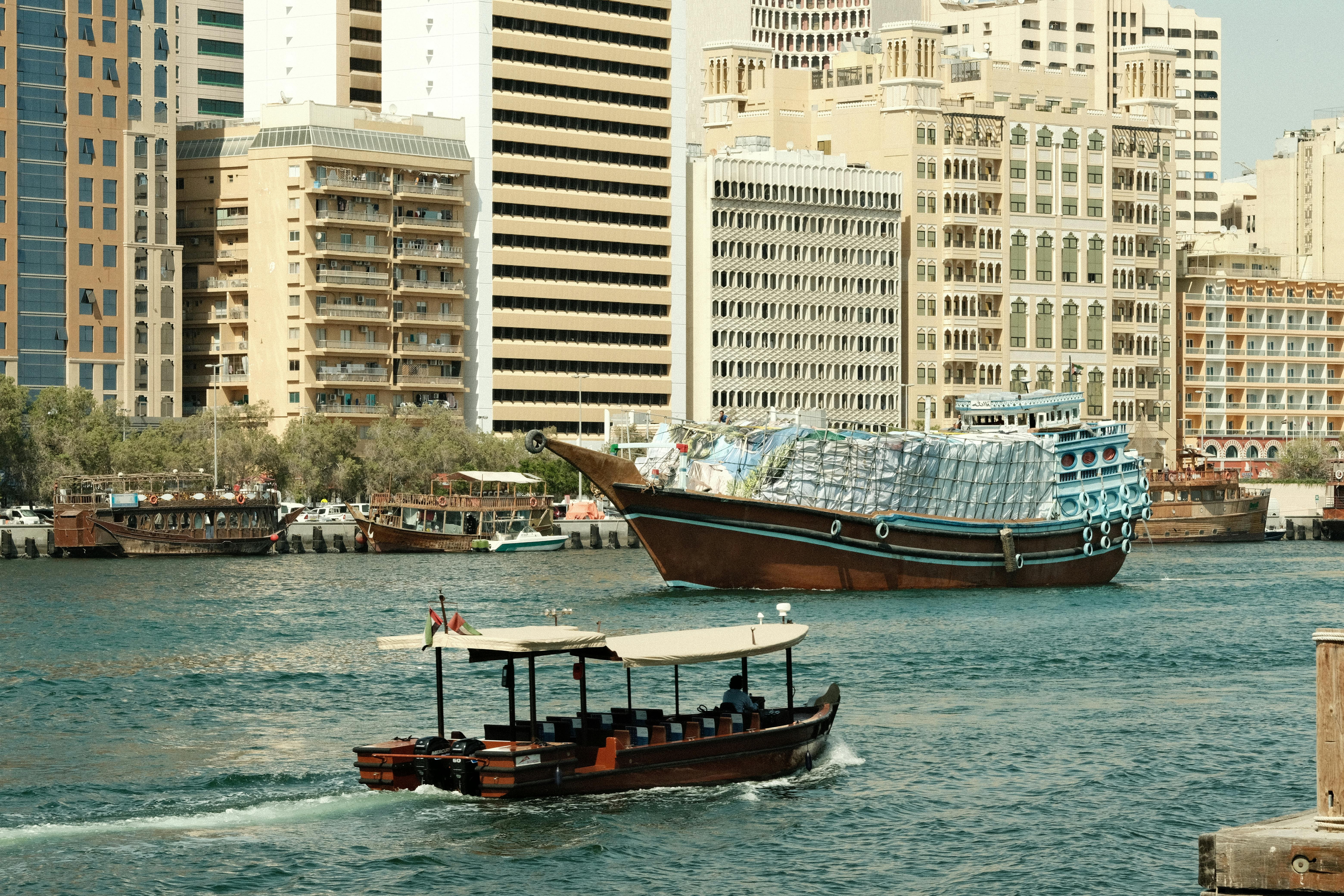Before the skyscrapers pierced the clouds, before the world knew its name, Dubai was simply a sweep of golden dunes under an endless sky — quiet, wind-carved, and seemingly untouched. Today, when you see its shimmering skyline rise from the desert, it feels almost impossible that this futuristic city grew from such humble beginnings.
But that impossibility is exactly what makes Dubai’s story extraordinary.

If you were to stand along Dubai’s shore at dawn, you’d watch sunlight slide down glass towers and ripple across still waters. Yet with just a moment of imagination, the skyline dissolves. You can almost hear the creak of wooden dhows, smell the briny mix of sea and spice, and sense the quiet determination of a tiny community clinging to a creek in the desert.
That’s where Dubai’s story begins, not in oil fields or corporate boardrooms, but beside a narrow waterway, with a tribe seeking a place to grow.
Today, Dubai feels like a mirage that has become real, with its floating islands, record-breaking towers, and a desert where ideas become architecture.
But beneath the innovation, its past whispers from every corner:
- In neighborhood names that once belonged to fishing villages
- In dhow boats gliding across the creek
- In the resilience of its people, who never stopped imagining more
And even if you’re not walking through Dubai in person, you can still explore its magic through virtual travel. Drift along the creek, step into ancient souks, or soar above the skyline as the desert sun sinks into the horizon.
A City Born on the Creek

Long before glass towers mirrored the sky, Dubai was a modest fishing and trading village hugging Dubai Creek, a natural inlet that became the lifeline of the region. Calm waters sheltered fishing boats, pearl divers, and merchants sailing in from Persia, India, and East Africa.
The earliest known mention of Dubai dates back to 1095 CE, as recorded in the writings of the Andalusian geographer Abu Abdullah al-Bakri. But its modern identity began in 1833, when the Bani Yas tribe, led by Maktoum bin Butti Al Maktoum, settled by the creek.
They weren’t searching for grandeur, just opportunity, stability, and a place to build. What they created instead was the foundation of a global city.
How Pearls Shaped a Desert Town

Long before oil, Dubai’s richest treasures came from the sea. For generations, pearl diving fueled the economy. Each summer, fleets of dhows carried divers into the Gulf, where they plunged into the deep with nothing but a rope, a nose clip, and courage. A single perfect pearl could feed families. The trade connected Dubai to royal courts across India and Europe.
Pearls weren’t just an industry; they were the heartbeat of the community. But by the 1930s, everything changed. The Great Depression and Japan’s creation of cultured pearls crushed the market. With livelihoods disappearing, Dubai stood on the edge of uncertainty. Many believed the desert might reclaim everything. Then came a discovery that rewrote the future.
Oil and the Turning of the Tide
Oil was discovered in 1966, a moment that could have defined the city forever. But Sheikh Rashid bin Saeed Al Maktoum saw oil differently. He knew it wouldn’t last. So instead of relying on it, he used its wealth as fuel for transformation.
Roads were built. Ports expanded. The creek was deepened to accommodate larger ships. Airports connected Dubai to the world. It wasn’t just development, it was a strategy. Dubai would not depend on oil. Dubai would depend on vision.
The Ambition That Reached the Sky

By the 1970s, Dubai had momentum. Under Sheikh Rashid’s successors, especially Sheikh Mohammed bin Rashid Al Maktoum, ambition became Dubai’s defining energy.
They imagined a city where:
- East meets West
- Tradition meets technology
- The desert meets the future
And so came the icons:
- Burj Khalifa, taller than imagination
- Palm Jumeirah, reshaping the sea itself
- Dubai Marina, sculpted from empty coastline
These were not just architectural wonders; they were declarations of belief. Proof that a place once defined by sand could become a global symbol of innovation. Trade flourished once more, but now it was ideas, finance, tourism, culture, and creativity. Dubai was no longer a remote outpost.
It was a crossroads of the world.
The Soul Beneath the Skyline

For all its shine, Dubai never lost its soul. In Al Fahidi Historical District, wind towers still catch desert breezes the way they did centuries ago.
In the Gold and Spice Souks, the scent of oud, saffron, and adventure drifts through alleys that once welcomed sailors from distant shores.
The call to prayer floats through the air much like it did when the first families built their homes beside the creek. Dubai’s beauty isn’t just its modern skyline. It’s this blend of past and present memory and ambition walking side by side.
A Horizon That Never Stops Expanding
Dubai’s story is not about oil or luxury. It’s about resilience, the courage to adapt, the instinct to reinvent, and the audacity to dream against all odds. From pearl divers to pioneers, from tribes to global innovators, every generation has added a chapter to the same truth.
Greatness can rise anywhere — even from shifting sands. In Dubai, the horizon has never been a limit. It’s always been an invitation.

